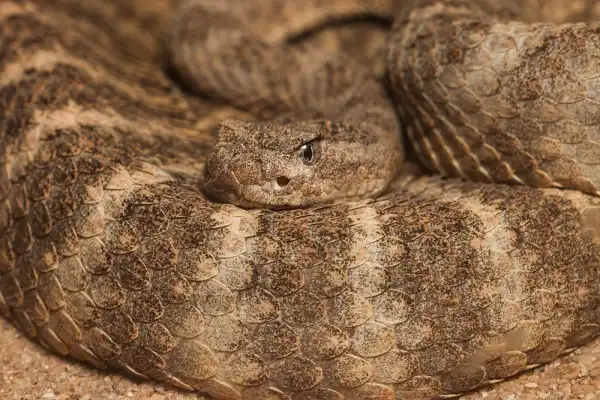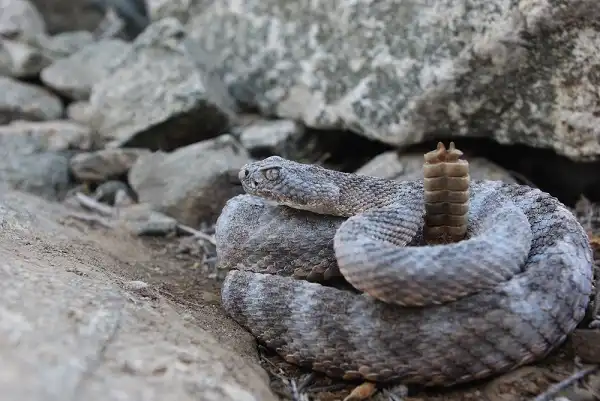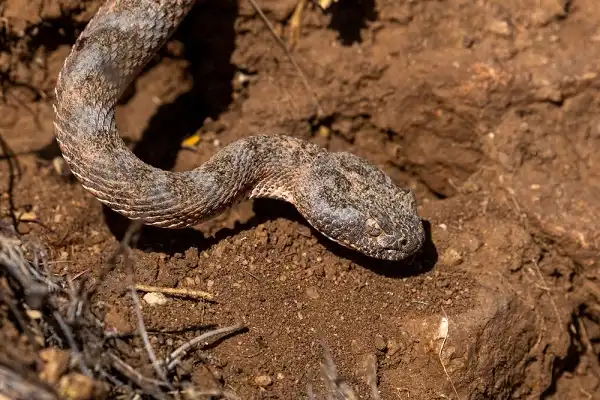If you’re looking for a new and exciting pet, look no further than the tiger rattlesnake! These fascinating creatures are not only beautiful but also unique in many ways. Here’s everything you need to know about these amazing snakes.

Tiger Rattlesnake Description
The tiger rattlesnake is a species of venomous pit viper native to the southwestern United States and northern Mexico. They have distinctively patterned scales that give them an unmistakable look. The head of a tiger rattlesnake is wide, with a triangular shape and dark coloration making it easy to identify. Its body is heavily marked with diamond-shaped patterns in shades of yellow, black, brown, or gray running along its back and sides This snake’s namesake feature is the rattle at the end of its tail. This unique adaptation serves as both a warning signal to potential predators and aid in locomotion while burrowing or swimming. When disturbed, a tiger rattlesnake will shake its tail rapidly which produces a distinctive buzzing sound.
Tiger Rattlesnake Habitat
Tiger rattlesnakes are found in a variety of dry, rocky habitats across the southwestern United States and northern Mexico. They are most commonly encountered in deserts, scrublands, grasslands, manzanita chaparral, woodlands, and oak savannas. These snakes can also be found in riparian areas along streams or rivers, but they typically avoid open water. When selecting a habitat for the tiger rattlesnake, the main factor that is taken into consideration is temperature. These reptiles are ectotherms and must regulate their body temperatures by basking or seeking refuge from the sun when necessary. This means that access to rocks and sheltering vegetation is key for them to survive and thrive. Another important feature of the tiger rattlesnake’s habitat is cover from potential predators such as birds of prey or mammals like foxes or coyotes. During the day these animals will use large rocks, burrows, or logs to hide while they rest and digest their food while at night they may search for food away from their usual basking spots.
Tiger Rattlesnake Diet
Tiger rattlesnakes have a varied diet, which mainly consists of small mammals, such as mice and voles, but they will also feed opportunistically on birds, lizards, and insects like grasshoppers. These snakes are typically ambush predators which means they usually hide near rocks or logs while waiting for unsuspecting prey to pass by before striking quickly and accurately. In addition to their smaller mammalian prey, tigers may occasionally take larger animals; however, this is quite rare. When searching for food away from their usual basking spots these reptiles will often travel long distances to find sources of food since larger mammals are much harder to locate than smaller ones. It’s important that a well-balanced diet is provided when caring for a pet tiger rattlesnake; otherwise, health problems can arise due to nutritional imbalances or deficiencies. A variety of foods should be offered on a regular basis including rodents, lizards, crickets, and mealworms as well as a vitamin supplement designed specifically for reptiles.

Tiger Rattlesnake Size
Tiger rattlesnakes are a species of pit viper, meaning they are venomous and have a deep pit between their eyes and nostrils that helps them detect infrared radiation. This species is typically medium-sized with adults ranging between 18 to 36 inches in length, although specimens up to 47 inches have been recorded. Their tail is equipped with a rattle at its end which is used as a warning signal when threatened or disturbed; however, these snakes will only use it as an absolute last resort when all other options fail. The size of this rattle increases in proportion as the snake grows and matures, allowing them to make more noise as they age.
Tiger Rattlesnake Lifespan
Tiger rattlesnakes typically live between 10 and 20 years in the wild, although they can potentially reach up to 30 years in captivity with proper care. In order to ensure optimum health, it’s important to provide suitable habitats and diets as well as regular veterinary checkups. The lifespan of tiger rattlesnakes depends on many factors such as their species, size, age, and living conditions. Wild individuals tend to have shorter lifespans due to a variety of environmental hazards such as predators, disease, and exposure to extreme temperatures. Additionally, those kept in captivity are usually provided with more consistent sources of food and shelter which helps them live longer lives. These animals tend to be most active during the day while they search for prey and bask under the sun’s warm rays. During cooler months or when food is scarce they may enter a state of semi-hibernation known as brumation which helps them conserve energy by slowing down their metabolism until conditions improve.
Tiger Rattlesnake Behavior
Tiger rattlesnakes are typically solitary animals but may form small social groups during periods of warmer weather. They also have an unusual behavior known as ‘rattling’, which involves shaking their tail to produce a loud noise when they feel threatened or disturbed. This helps them scare away potential predators and warn other animals that they are present in the area. When it comes to communication, tiger rattlesnakes rely mostly on chemical signals known as pheromones; these are released by both males and females in order to attract potential mates. Additionally, these animals can use body language to communicate with each other; for instance, when two snakes cross paths they will often engage in a ritual known as ‘cork-screwing’ where they spiral around each other before eventually moving away from each other. In terms of territory, tiger rattlesnakes tend to be highly territorial; male specimens tend to defend larger areas than females and will often attempt to chase off intruders if they don’t recognize them as being part of their group. This behavior is typically only seen during the breeding season but can continue even after the eggs have been laid if there is still competition for resources or mates within the area.

Tiger Rattlesnake Speed
Tiger rattlesnakes are relatively slow-moving animals, with their average speed ranging from 0.1 to 0.7 kilometers per hour. However, when threatened or when chasing prey these reptiles can reach speeds of up to 3 kilometers per hour (or 1.86 miles per hour), making them some of the fastest snakes in the world. In terms of endurance, tiger rattlesnakes can maintain a steady pace for several hours at a time if needed. When moving across different types of terrain, tiger rattlesnakes are able to adapt their speed and agility to fit the conditions. On solid ground, they will typically move in a straight line with alternating side-to-side movements that help them navigate treacherous surfaces such as rocks and sand dunes. When swimming in water they are able to achieve much higher speeds by using their body like a propeller and pushing off the bottom of rivers and ponds with force. The speed of tiger rattlesnakes can also vary depending on the season; during periods of hibernation or brumation, these animals tend to move much slower than normal due to their slower metabolism and reduced energy levels.
Tiger Rattlesnake Hunting
Tiger rattlesnakes are primarily ambush predators, meaning that they prefer to lay in wait for their prey rather than actively searching for it. This behavior is often observed in areas with plentiful vegetation, as the tiger rattlesnake can easily blend in with its surroundings and remain undetected until its prey passes by. When hunting, these animals typically rely on both sight and smell to detect potential meals; their forked tongue helps them sniff out food from up to 20 feet away! Once the target has been identified, the tiger rattlesnake will usually strike quickly in order to immobilize it before attempting to swallow it whole. The snake uses its long body and powerful jaws to constrict around its prey until it can no longer breathe; though this process can take some time depending on the size of the meal. When it comes to predatory behavior, juvenile tigers are more likely to hunt during daylight hours while adults tend towards nocturnal activity. This is due largely in part to prey availability; daytime provides an abundance of small lizards and mammals while night offers a more diverse selection of birds and insects that are easier targets for larger specimens.

Conclusion
Tiger rattlesnakes are amazing predators with a great number of adaptations that help ensure their success in the wild. From their incredible speed and agility to their impressive hunting abilities, these reptiles truly are an incredible species! Understanding the behaviors and habits of tiger rattlesnakes is essential for ensuring their conservation; this knowledge can also be used to protect domestic animals from coming into contact with one of these powerful predators. With more research, we can continue to learn more about this majestic animal and work towards its protection for generations to come!
Frequently Asked Question


